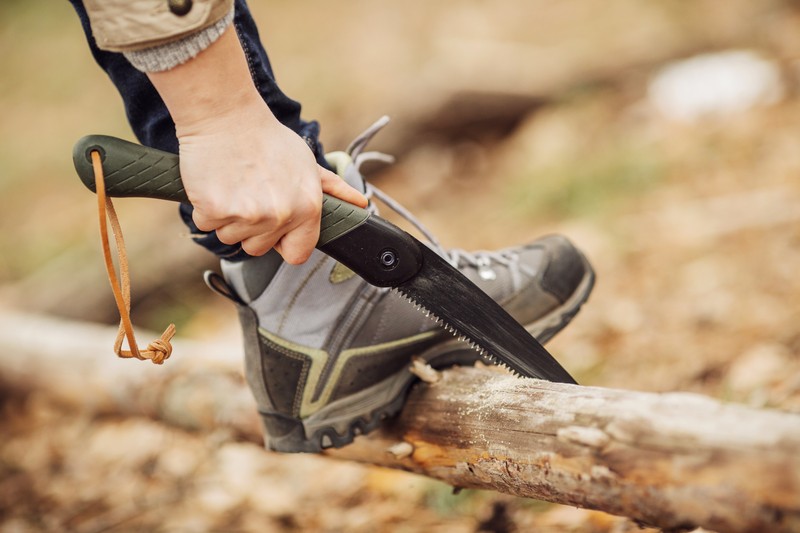Bushcraft skills are thought by many to have gone the way of the voyagers. But they're making a comeback, especially as more and more people are realizing the benefit of having more than one set of skills to fall back on. Check out some of our favorite bushcraft skills below.
Splitting With A Saw
If you find yourself without a chopping tool but still need to split wood, take your saw and cut halfway through a branch about 2 inches from the end. Hold the branch so that the saw cut is facing down and tap it on a rock, making contact on the cut section. Keep tapping and the wood will split down the middle along the grain. You can repeat this process all the way down to small, kindling-sized pieces if needed.Dandelion Root Tea
After a long winter, the cleansing effects of dandelion tea on the hepatic system are refreshing and prepare the digestive system to handle all the new greens of spring. To prepare, dig up the roots before the flower head forms so the good medicinal properties are still in the root and not going into making a flower. Chop the roots into small chunks. Boil water (do not boil the root in the water.) Have a lid ready. Pour the boiled water over the root and immediately cover the pot, keeping all the beneficial medicinal qualities inside. Let steep six to eight hours.Making Natural Charcloth
Many newcomers to bushcraft assume that the only way to make charcloth is to carry materials such as linen, cotton or jute, but that’s not true. Punkwood is one of the best materials, and it can be harvested nearly anywhere in the world from nearly any type of tree. You will know punkwood by the way it feels—super light and spongy, similar to Styrofoam.Finding Fine Tinder
Pitchwood, also known as fatwood, is nature’s finest tinder. When lit, pitchwood burns ferociously as if it were soaked in gasoline. It will burn under the worst weather conditions, even while rain or snow is falling. The easiest way to find pitchwood is to look for dead branches at the base of pine trees and saw them off at the knot. You can then scrape off as much as you need. The best trees for finding pitchwood are Ponderosa and Lodgepole Pines in the Western U.S., and Longleaf Pines and Pitch Pines in the Eastern U.S. Pitchwood can also be found in many other species of pines as well as in Douglas Firs and Western Larch trees, so it’s worth giving them a shot, regardless of your location in the country.Wilderness Water Collection
When collecting water from a moving source such as a creek or stream, submerge your water bottle with the opening facing downstream. This will reduce the amount of organic matter you collect. If using a chemical treatment, after the recommended wait time, you will still have to address the tainted water in the threads of the bottle and cap. To do so, turn the bottle upside and slowly loosen the cap until enough treated water purges all the threads. The smart woodsman takes advantage of that little bit of treated water to clean his hands, too, as it is generally not the water that makes people sick in camp or on the trail, it is poor hygiene.
Of these skills, by far my favorite is the technique of forming natural charcloth. You can use almost any organic material for this, and oftentimes it will work even better than the strips of cotton you're used to. Being able to collect your own fatwood is also a valuable skill; stop buying those expensive tins of the stuff and just go out into the woods with a small hatchet and you'll be able to collect more than you could possibly use.
There are far too many tricks to list here. For even more impressive bushcraft skills, we encourage you to check out Real World Survivor.
